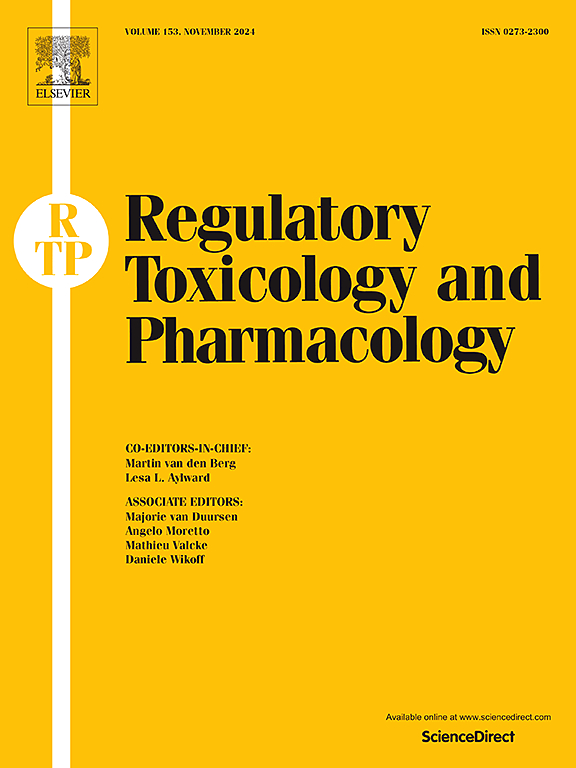化学特性鉴定水平的未知置信度:当暂定鉴定足以用于医疗器械的毒理学风险评估时。
IF 3.5
4区 医学
Q1 MEDICINE, LEGAL
引用次数: 0
摘要
识别化学品对于化学表征和毒理学风险评估(TRAs)至关重要,以评估医疗设备对患者构成的安全风险。在信息有限的情况下准确识别物质的负担很大。对于化合物鉴定进行TRA所需的信心缺乏共识。为了解决这一差距,对化学表征报告和TRAs进行了评估,并将许多初步鉴定的化合物分组到化学类别中,这些类别可能包括所有初步鉴定或鉴定的混合物,然后作为一个化合物处理。通过使用这种方法,不使用每个小组成员的置信水平来调节风险评估的结果,从而避免了对每个小组成员进行确认识别的需要。通过了解下游置信水平的利用,确定化学表征过程中检测到的所有化合物的置信鉴定所涉及的负担可以减少到可能具有更高毒理学重要性的化合物鉴定方面。开发了一种决策树,将识别过程集中在感兴趣的化合物上,并提供了一种分配置信水平的方法。该工具可用于减轻确定个人置信水平的负担,而不影响TRA结论的可靠性。本文章由计算机程序翻译,如有差异,请以英文原文为准。
Unknown confidence in chemical characterization identification levels: When tentative identifications are adequate for toxicological risk assessment of medical devices
Identifying chemicals is critical to chemical characterization and toxicological risk assessments (TRAs) for evaluating patient safety risks posed from medical devices. The burden to accurately identify substances with limited information is high. There is lack of consensus on the confidence needed for compound identifications to conduct a TRA. To address this gap, chemical characterization reports and TRAs were evaluated, and many tentatively identified compounds were grouped into chemical classes, which may consist of all tentative identifications or a mixture of identifications, then treated as one compound. By using this approach, the confidence level of each group member was not used to modulate the outcome of the risk assessment, obviating the need for confirmed identification of each group member. By understanding the downstream confidence level utilization, the burden involved in determining confident identification for all compounds detected during chemical characterization can be reduced to aspects of compound identification that may pose higher toxicological importance. A decision tree was developed to focus the identification process on compounds of interest as well as a method to assign confidence levels. This tool can be used to reduce the burden in identifying individual confidence levels without compromising the reliability of the conclusion of the TRA.
求助全文
通过发布文献求助,成功后即可免费获取论文全文。
去求助
来源期刊
CiteScore
6.70
自引率
8.80%
发文量
147
审稿时长
58 days
期刊介绍:
Regulatory Toxicology and Pharmacology publishes peer reviewed articles that involve the generation, evaluation, and interpretation of experimental animal and human data that are of direct importance and relevance for regulatory authorities with respect to toxicological and pharmacological regulations in society. All peer-reviewed articles that are published should be devoted to improve the protection of human health and environment. Reviews and discussions are welcomed that address legal and/or regulatory decisions with respect to risk assessment and management of toxicological and pharmacological compounds on a scientific basis. It addresses an international readership of scientists, risk assessors and managers, and other professionals active in the field of human and environmental health.
Types of peer-reviewed articles published:
-Original research articles of relevance for regulatory aspects covering aspects including, but not limited to:
1.Factors influencing human sensitivity
2.Exposure science related to risk assessment
3.Alternative toxicological test methods
4.Frameworks for evaluation and integration of data in regulatory evaluations
5.Harmonization across regulatory agencies
6.Read-across methods and evaluations
-Contemporary Reviews on policy related Research issues
-Letters to the Editor
-Guest Editorials (by Invitation)

 求助内容:
求助内容: 应助结果提醒方式:
应助结果提醒方式:


